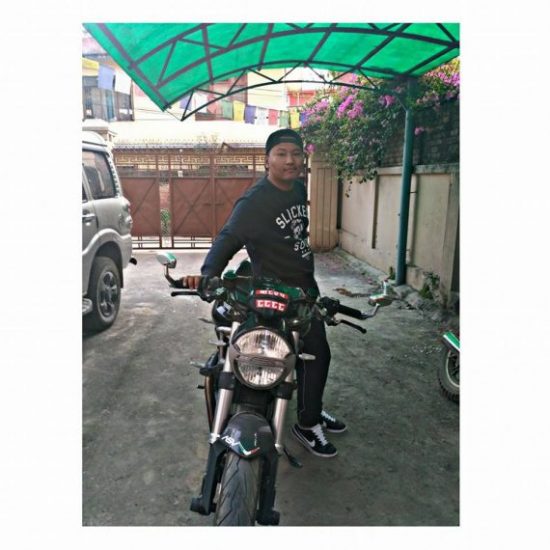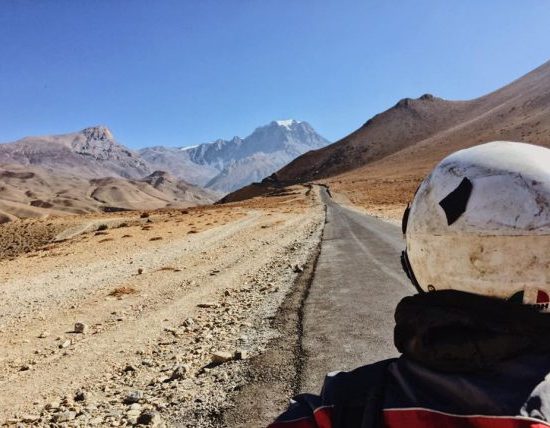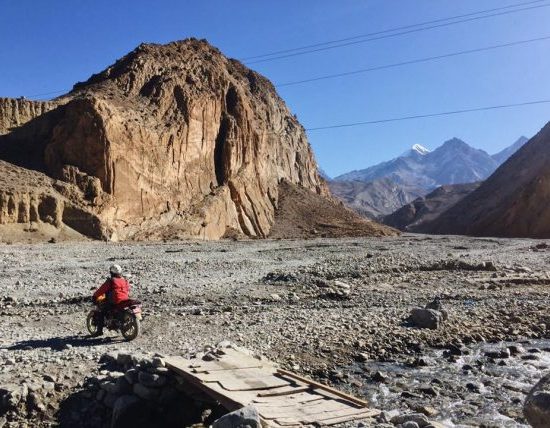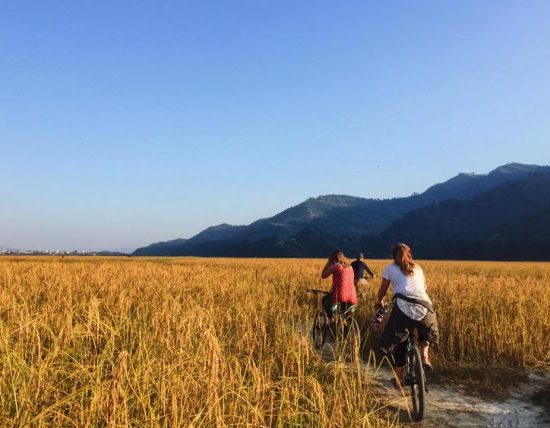
Week 5: Bicycles
People use them for exercise, recreational activities, and transport. Bikes can be found all over the US – children ride them around cul-de-sacs and city-dwellers ride them to work. They range in size, color, and design, but they all serve the purpose of transporting someone from one place to another. What is the bike-culture like in the place you’re staying? Are bikes used more regularly than other types of transport? Are there designated bike lanes on the roads or are the bikers mixed in with other traffic? Are there certain places where you are more likely to see bicycles than others? Since you’ve been abroad have you been on any bike rides?
Micah Dirkers
The city of Edinburgh (and my guess is that this would generalize to other UK cities) had a present culture surrounding bikes. As one of the most travel-friendly and bicycle-friendly cities in the UK (though still not on the level of Denmark or the Netherlands), many of the city’s residents and tourists use these two wheels as their preferred mode of transportation—culminating in Cyclefest, the ten-day Edinburgh Festival of Cycling. One can witness cyclers pretty much everywhere in the city at most times of the day: workers used bikes to travel to work, students cycled to classes, and even Deliveroo employees used bicycles to deliver hot meals from nearby restaurants. Cycling is typically preferred by many, simply because it is much easier and much faster to get around, particularly for shorter distances. Given how Edinburgh is built on many hills, it easy to gain downward momentum that will carry you far, regardless of what type of bike you use. As far as I saw, there was no distinction between mountain bike and city bike, since most of the bikes looked fairly normal. As such, many of the bicycles were standard, rigid, two-wheel devices, which were not allowed indoors or on trains, but a growing number of people also used foldable bikes, which were allowed indoors and on trains. It wouldn’t matter if you did not own a bike, because rentable and loanable bicycles were readily available for a number of companies. Coupled with the environmental awareness that is also present in the UK, the culture around cycling was one of sustainability, mobility, and accessibility.
While there is, indeed, a distinct culture of cycling in Edinburgh, not all people buy into and approve of this culture. While a fair amount of the city has designated cycling lanes, these spaces are not found everywhere; hence, cyclists sometimes compete with motorists for space on the road. This can frustrate motorists, especially if a cycler is traveling slowing or attempting to maneuver dangerously through moving (or paused) traffic. Not only did motorists compete with cyclists, but there were also trams, busses, and trains that would occupy road space, especially as one moved closer to the city center. This was especially true on the cobblestone streets, where cars had a marked advantage, as cycling on cobblestone can be dangerous and rattling. Some cyclers tried to avoid both the traffic and the cobblestone by cycling on the pavement and designated walkways, but such action is illegal, as bicycles were basically treated as cars, and such instances were few and far between. Indeed, cycling is popular, but it is not without its challenges.
During our orientation’s safety section, we learned from a representative from Police Scotland more about these challenges regarding cycling in Edinburgh. We covered how one is basically free to travel on any road by bicycle—even those which are closed to vehicular traffic—but that all roads may not be maintained equally with traffic controls or pavement quality. Thus, all cyclists are encouraged to motion with their hands where they will be turning to provide clear information to other drivers, to wear at least a helmet if not other protective gear, and to be equipped with sufficient reflectors for safety. When storing the bike, t-locks were recommended, as those were the type of locks least prone to being sawed or sliced open. Indeed, cycling, we learned, is not without hazards, as the bike wheels can get stuck in tram or train tracks, resulting in injured riders and crumpled bicycles. Bicycle theft was actually the largest type of crime occurring in the city, according to the Police Scotland officer who conducted the presentation. A bicycle storehouse was situated outside our dorm, and even our residence staff encouraged us to keep our bikes locked safely. Having covered safety, he encouraged us to ride our bikes for ease of travel and accessibility. So while I did not personally use any bicycles to navigate the city, as I relied mainly on walking or riding buses, it was refreshing to see a culture, laws, and funding in support of an active use of bicycles in a modern city—something that is not always visible in many cities in the United States.
Jenny Lundt
Bikes were a huge part of my study abroad experience… but not normal bikes… motorbikes. It is impossible to miss them even upon the first second of leaving the airport. Motorbikes swarm the city like little buzzing insects, darting through the heavily congested streets and clouds of dust. Kathmandu is a city that is dominated by motorbikes through every muddy road, pot hole, and endless construction roadblocks. It is estimated that ¾ motor vehicles on the road are motorbikes. A lot of roads in Nepal do not have lane lines on them, so it is anybody’s guess as to how to navigate them. Death defying feats of motorbikes zooming through lines to pass the traffic were things I witnessed every day.
The bikes were also was a symbol of masculinity for my host brother as he was always gossiping with me about which boy in our neighborhood had which bike with what engine power. There are a large variety of bikes from the small ones that were lovingly referred to as “scooties” to large motor powered Royal Enfields. Tenzin tried to get me to help him at every dinner to convince our Pala that they needed to buy a motorbike for the family. He was the one to take me on my first ride during my semester as he raced my friend Nick and I up and down our street, flying past all of our neighbors.
I even received the opportunity (don’t tell my program please, this was very against the rules) to go on a motorbike trip to the Himalayas. My friend and I started in Pokhara and then drove 7 hours through the mountains to the hot spring village of Tatopani in the Sindhupalchok district. I will never forget the exhilaration of driving through bumpy, dusty roads just barely carved out on the side of a mountain. We drove through the deepest gorge in the world, through forests, through a funeral procession, and through a river where my shoes got absolutely soaked. The roaring sound of the wind and the rev of the engine as we ascended up and up into the clouds was one of the most empowering and freeing moments of my life. For the next few weeks, I had the opportunity to travel to a number of villages on the back of a bike, making so many dreams come true.
I took one pedal bike trip while I was in Nepal and that was in the lake town of Pokhara with 3 of my friends. We biked out of the main city and into the fields and villages surrounding it to watch the sunset. It was truly a wonderful day.
Oneida Shushe
I’m so impressed with Geneva. As I’m writing this, I’m looking out my window and I see cars, motorcycles, pedestrians, buses, and bikers passing by. The city also has trams and, of course, trains, but trains don’t really pass on the same paths as these other modes of transportation. Last weekend, my friends also saw someone skiing down the sidewalk because it snowed a few inches here. In a busy intersection toward the center of Geneva, these modes of transportation come together for nothing short of a miracle in Swiss civil engineering. With clear traffic signals and designated lanes, everything runs mostly smoothly.
While I haven’t done it yet, I look forward to biking along Lac Léman, also known as Lake Geneva, at some point this semester. Because using a bike isn’t built into the road planning or culture of my community back home, I haven’t ridden a bike in a long time. But here in Geneva, bikes are everywhere! There are bike racks in front of super markets, by the train station, and most places if you look for them.
Riding a bike is efficient in a city because most people’s commutes or errand runs are a fitting distance away, but it’s also good for health. The 8th priority in the Shanghai Consensus on Health Cities 2016 is “design our cities to promote sustainable urban mobility” through, for example, “active transport infrastructure” like bike lanes and related planning. In this way, people can exercise without even realizing it! Recognizing the importance of health factors in city planning, I hope that more cities in the US and across the world will promote a healthy bike culture.

Bike rack next to the University of Geneva






